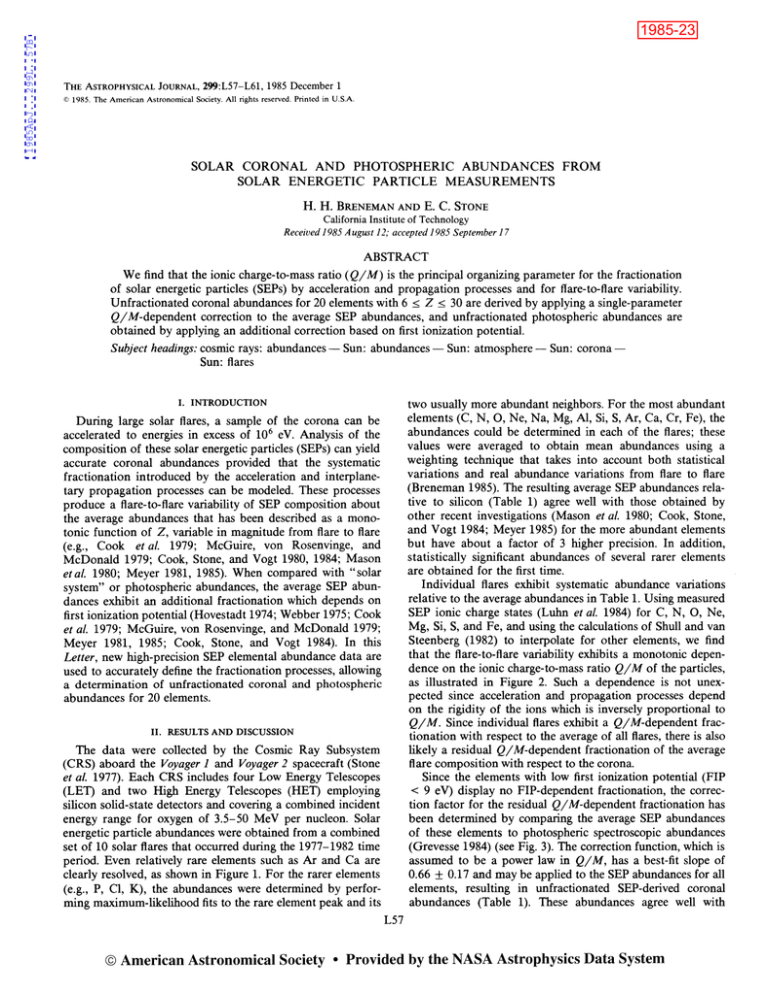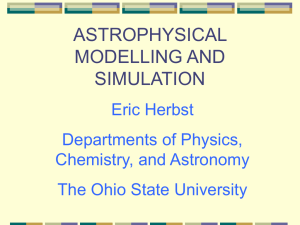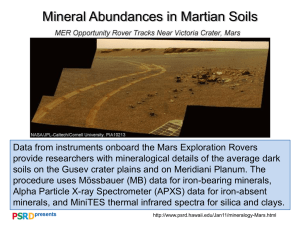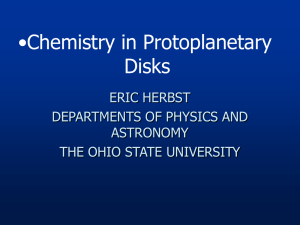
1985ApJ...299L..57B
1985-23
THE ASTROPHYSICAL JOURNAL,
©
299:L57-L61, 1985 December 1
1985. The American Astronomical Society. All rights reserved. Printed in U.S.A.
SOLAR CORONAL AND PHOTOSPHERIC ABUNDANCES FROM
SOLAR ENERGETIC PARTICLE MEASUREMENTS
H. H.
BRENEMAN AND
E. C.
STONE
California Institute of Technology
Received 1985 August 12; accepted 1985 September 17
ABSTRACT
We find that the ionic charge-to-mass ratio (QIM) is the principal organizing parameter for the fractionation
of solar energetic particles (SEPs) by acceleration and propagation processes and for flare-to-flare variability.
Unfractionated coronal abundances for 20 elements with 6 :s; Z :s; 30 are derived by applying a single-parameter
QI M-dependent correction to the average SEP abundances, and unfractionated photospheric abundances are
obtained by applying an additional correction based on first ionization potential.
Subject headings: cosmic rays: abundances - Sun: abundances - Sun: atmosphere - Sun: corona Sun: flares
I. INTRODUCTION
two usually more abundant neighbors. For the most abundant
elements (C, N, 0, Ne, Na, Mg, Al, Si, S, Ar, Ca, Cr, Fe), the
abundances could be determined in each of the flares; these
values were averaged to obtain mean abundances using a
weighting technique that takes into account both statistical
variations and real abundance variations from flare to flare
(Breneman 1985). The resulting average SEP abundances relative to silicon (Table 1) agree well with those obtained by
other recent investigations (Mason et al. 1980; Cook, Stone,
and Vogt 1984; Meyer 1985) for the more abundant elements
but have about a factor of 3 higher precision. In addition,
statistically significant abundances of several rarer elements
are obtained for the first time.
Individual flares exhibit systematic abundance variations
relative to the average abundances in Table 1. Using measured
SEP ionic charge states (Luhn et al. 1984) for C, N, 0, Ne,
Mg, Si, S, and Fe, and using the calculations of Shull and van
Steenberg (1982) to interpolate for other elements, we find
that the flare-to-flare variability exhibits a monotonic dependence on the ionic charge-to-mass ratio QIM of the particles,
as illustrated in Figure 2. Such a dependence is not unexpected since acceleration and propagation processes depend
on the rigidity of the ions which is inversely proportional to
QI M. Since individual flares exhibit a QIM-dependent fractionation with respect to the average of all flares, there is also
likely a residual QIM-dependent fractionation of the average
flare composition with respect to the corona.
Since the elements with low first ionization potential (FIP
< 9 eV) display no FIP-dependent fractionation, the correction factor for the residual QIM-dependent fractionation has
been determined by comparing the average SEP abundances
of these elements to photospheric spectroscopic abundances
(Grevesse 1984) (see Fig. 3). The correction function, which is
assumed to be a power law in QIM, has a best-fit slope of
0.66 ± 0.17 and may be applied to the SEP abundances for all
elements, resulting in unfractionated SEP-derived coronal
abundances (Table 1). These abundances agree well with
During large solar flares, a sample of the corona can be
accelerated to energies in excess of 10 6 eV. Analysis of the
composition of these solar energetic particles (SEPs) can yield
accurate coronal abundances provided that the systematic
fractionation introduced by the acceleration and interplanetary propagation processes can be modeled. These processes
produce a flare-to-flare variability of SEP composition about
the average abundances that has been described as a monotonic function of Z, variable in magnitude from flare to flare
(e.g., Cook et al. 1979; McGuire, von Rosenvinge, and
McDonald 1979; Cook, Stone, and Vogt 1980, 1984; Mason
eta/. 1980; Meyer 1981, 1985). When compared with "solar
system" or photospheric abundances, the average SEP abundances exhibit an additional fractionation which depends on
first ionization potential (Hovestadt 1974; Webber 1975; Cook
et al. 1979; McGuire, van Rosenvinge, and McDonald 1979;
Meyer 1981, 1985; Cook, Stone, and Vogt 1984). In this
Letter, new high-precision SEP elemental abundance data are
used to accurately define the fractionation processes, allowing
a determination of unfractionated coronal and photospheric
abundances for 20 elements.
II. RESULTS AND DISCUSSION
The data were collected by the Cosmic Ray Subsystem
(CRS) aboard the Voyager 1 and Voyager 2 spacecraft (Stone
et al. 1977). Each CRS includes four Low Energy Telescopes
(LET) and two High Energy Telescopes (HET) employing
silicon solid-state detectors and covering a combined incident
energy range for oxygen of 3.5-50 MeV per nucleon. Solar
energetic particle abundances were obtained from a combined
set of 10 solar flares that occurred during the 1977-1982 time
period. Even relatively rare elements such as Ar and Ca are
clearly resolved, as shown in Figure 1. For the rarer elements
(e.g., P, Cl, K), the abundances were determined by performing maximum-likelihood fits to the rare element peak and its
L57
© American Astronomical Society • Provided by the NASA Astrophysics Data System
1985ApJ...299L..57B
I
s
p
Si
Ar
Cl
0.5
N
<J
. ;,..
:-: ·:. ·~.·:-.
.•: : ·.......
0.0
~~
:.. ·: ...
:
~. .·
':' ......··/'. ~
"'
•I.
....·
•• ~· ,,....... :..•'t,: •
•
..
K
.. .
···: oJt;:., ;. ..
.... "
•'•,• r.·t':. •:
.~,
I••
··:.,·:~,I:
-0.5
. :- .
...
14
15
16
18
17
.....
.. . ...::~:_,;'·
. .
. : .. ~-·":
\. !·:~-:~
.....
..,·-
~.
-I
Ca
19
20
(Z)
FIG. 1.-Scatterplot of SEP data from LET in the Z = 14-20 charge range. ( Z) is the average, and tiz the difference, of two essentially independent
charge determinations obtained from the LET data for each analyzed particle.
TABLE 1
SOLAR ENERGETIC PARTICLE AVERAGE ELEMENTAL ABUNDANCES AND
SOLAR ENERGETIC PARTICLE-DERIVED CORONAL
AND PHOTOSPHERIC ABUNDANCES
ABUNDANCE (Si
z
6.
7 .......
8 .......
9 .......
10 .......
11.. .....
12 .......
13.. .....
14 .......
15 .......
16 .......
17.. .....
18 .......
19 .......
20 .......
21. ......
22 .......
23 .......
24 .......
25 .......
26 .......
27 .......
28 .......
29 .......
30 .......
ELEMENT
c
N
0
F
Ne
Na
Mg
Al
Si
p
s
Cl
Ar
K
Ca
Sc
Ti
v
Cr
Mn
Fe
Co
Ni
Cu
Zn
=
1000)
SEP-derived
Corona
SEP
2710. +_~~g
775. +.~t
6230. +_~~g
(0.30 +_ 8~6) b
887.
73.3"'.b~
1206. +.~t
87.4"'.tj
1000.
4.61 +_g~~
222. +_ ~2.05+.rn
20.74:~~
3.3+.U
68. +_ i~.
-i:n
(0.244:8~Jb
3.8"1:[6
(0.374:8~~)b
14.3 +_ ~~
5.2+.~g
959. +_ ~~ 5
< 13.2
33.84:~~
(0.39+.rn)b
1.064:8~~
2350. +_~~g
700. +_~~
5680. +_~~g
(0.28+.gmb
783. +_ ~~
67.o+.g
1089. +.~i
83.7"'.!6
1000.
4.89"'.8~~
242. +_~O
2.384:8~6
24.l +_j~
3.9+.U
82. ":ii
(0.314:8~ilb
4.94:[~
(0.48+.rnib
18.3"'.~~
6.8+.g
1270. +_ gg
< 18.l
46.54:~1
(0.57+.ggib
1.61+.rn
SEP-derived
Photosphere
[6490. +_~~g la
[2775. +.~i la
[22900.la
[(1.1 +_ )bla
[3140.+.m1a
67.o+.g
1089. +.~i
83.74::6
1000.
u
[9.24"'.[1~la
[460.la
[9.6"'.~~la
[102. +_~~la
3.9+.U
82. +_ii
(0.314:8~ilb
4.94:)~
(0.48+.gmb
18.3"'.~~
6.8+_~ ~
1270. :i:
< 18.1
46.5+.U
(0.57+.ggib
ni
l.614:8~b
aN, F, Ne, Cl, and Ar have been renormalized to oxygen. The stated
uncertainties are relative to oxygen and do not include a systematic uncertainty of - 6% due to the uncertainty in the FIP fractionation which is
assumed to be the same as for oxygen. Similarly, P is renormalized to S and
both have a systematic uncertainty of - 9% from the sulfur fractionation
correction. The C fractionation uncertainty is assumed to be a factor of 1.5
in order to include the fractionation values for 0 and S. The illustrative
calculation by Geiss and Bochsler 1984 suggests that the precise ionization
fractionation depends on several parameters and may differ by - 30% from
those assumed.
bAbundances for these elements are based on five or fewer particles and
are highly uncertain.
L58
© American Astronomical Society • Provided by the NASA Astrophysics Data System
1985ApJ...299L..57B
2.0 (a)
c:
0
t.•
1.0
•
Q)
~0.5
Q)
·t +
(.J
c:
.g2.o
c:
::J
-g
1.0
(b)
•
••
0.5
0.4
0.2
0.6
Q/M
FIG. 2. -Abundances relative to the mean SEP abundance for two typical flares, plotted vs. QI M. The data were collected during the time periods (a)
1978 April 21-29 and (b) 1977 September 24-27. The QIM-dependent abundance fractionation can be represented by (QIM) 0 •
total uncertainty
SEP uncertainty
....
Cl>
Cl>
..c.
a.
(/)
0
0
..c.
a.
'
~
1.01-----Atlll-iff----=---......,~"'----"-----f
c:
0
-0
c:
::J
.0
0
a..
w
(/)
0.1 L - -_ _ _ _ _......__ _ _......__ __.__
0.2
0.3
0.4
0.5
____,
0.6
Q/M
FIG. 3.-Mean SEP abundance relative to the photosphere (Grevesse 1984) for the low-FIP elements, plotted vs. QIM. The total uncertainty is
indicated for all elements for which there is a quoted uncertainty in the spectroscopically derived photospheric abundances. The fractionation of the SEP
abundances relative to the photosphere is represented by a power law in QI M which is fitted to all of the elements shown except Al, Ti, and Mn, which
have unknown photospheric uncertainties. The reduced x2 of the fit is 1.0.
L59
© American Astronomical Society • Provided by the NASA Astrophysics Data System
1985ApJ...299L..57B
5.0
Q)
"""'ta"'l
s
Ca
total uncertainty
SEP
2.0
0
c
0
Ar
"'O
c
::J
0
(a) corona
0
1.0
.c
Ne8
0
·a.
0
0
!/)
0.5
0
....
0Q)
a.
!/)
......
Zn
Q)
0
c
2.0
0
K
"'O
c
:J
.c
Na
0
cc
(bl photosphere
1.0
e0
p
0
"'O
Q)
>
Mn
0.5
....
s~
F
Cl
Q)
~
"'O
I
a..
w
CJ)
c
0.2
8
0.1
4
6
8
10
12
Ne
N
0
8
Ill
14
Ar
8
~
16
18
20
22
first ionization potential (eV)
FIG. 4.-(a) SEP-derived coronal abundances relative to spectroscopically derived coronal abundances (Veck and Parkinson 1981), plotted vs. FIP.
Spectroscopic uncertainties are quoted only for S, Ar, and Ca. ( b) SEP-derived coronal abundances relative to spectroscopic photospheric abundances
(Grevesse 1984), plotted vs. FIP. Total uncertainties are shown for only those elements with quoted uncertainties in the photospheric abundance. Unlike
the majority of elements, the photospheric abundances of C, N, 0, F, and Cl were obtained primarily from molecular spectral lines, while those of Ne and
Ar were inferred from other solar and stellar abundance data.
5.0
Q)
u
total "ncertolntl
Q)
u
c
c
SEP uncertainty
0
0
"O "O
c
c
0
0
::::J ::::J
.&l .&l
u -~
.....
·.::
Q)
Ti
2.0
Q.
-I/)
I/)
0
0
0
"O
u
1.0
Al
Zn
K
Cot
Q)
.s::.
.s::.
Q.
F
Mn
~
Ar
0
.s::. .s::.
0. Q.
Q)
>
Q.
"O
-
..... 0
Q) u
I/)
I
a..
w
(.f)
0.5
,,"
cl!l
v
0
.....
u
Q)
Q.
I/)
0.2
FIG. 5.-SEP-derived photospheric abundances relative to spectroscopically derived photospheric abundances (Grevesse 1984). Total uncertainties are
shown for only those elements with quoted uncertainties in the spectroscopically derived abundances. The estimated uncertainties in the FIP fractionation
correction are separately indicated by the vertical brackets.
© American Astronomical Society • Provided by the NASA Astrophysics Data System
1985ApJ...299L..57B
SOLAR CORONAL AND PHOTOSPHERIC ABUNDANCES
coronal abundances obtained by XUV/X-ray spectroscopy
(see Fig. 4a), but have much higher precision and are available for many more elements.
In Figure 4b, the SEP-derived coronal abundances are
compared to the Grevesse (1984) photospheric abundances;
this shows more clearly the step-function nature of the FIPdependent fractionation previously reported (Cook et al. 1979;
Meyer 1981, 1985; Cook, Stone, and Vogt 1984). The dynamical ionization model of Geiss and Bochsler (1984) for the
formation of the corona from photospheric material suggests
that high-FIP elements such as N, 0, F, Ne, Cl, and Ar, which
cannot be ionized from the ground state by the large flux of H
Lya photons, are depleted because their ionization times are
longer than the time individual atoms spend in a rising
spicule. Since this model indicates that the ionized fractions of
N, 0, Ne, and Ar are similar, their abundances are corrected
by the depletion factor of oxygen in SEPs relative to the
photosphere (4.03 ± 0.26). In the absence of detailed calculations, the abundances of F and Cl, which have similar FIPs,
are corrected by this same factor, while P and S have lower
L61
FIPs and are corrected by the depletion factor of sulfur
(1.89 ± 0.17), and C, having an intermediate FIP, is corrected
by the geometric mean of the oxygen and sulfur depletion
factors. The low-FIP elements, which are quickly ionized,
should be unfractionated and therefore require no correction.
The resulting SEP-derived photospheric abundances (Table
1) involve different modeling parameters than spectroscopic
determinations and are available for some elements (e.g.,
C, N, Ne, Ar) that are difficult or impossible to observe spectroscopically. The main differences (Fig. 5) are a significantly
higher abundance of Cr (and possibly Ca and Ti) and a C
abundance that is about half of the commonly assumed solar
abundance. The SEP-derived Fe/Si ratio is in agreement with
the recent photospheric value (Grevesse 1984), which is 50%
larger than the meteoritic value.
We appreciate the contributions of R. E. Vogt and other
CRS team members. This work has been supported in part by
NASA under contract NAS7-918 and grant NGR 05-002-160.
REFERENCES
Breneman, H. H. 1985, Ph.D .. thesis, California Institute of Technology.
Mason, G. M., Fisk, L.A., Hovestadt, D., and Gloeckler, G. 1980, Ap.
Cook, W. R., Stone, E. C., and Vogt, R. E. 1980, Ap. J. (Letters), 238,
J., 239, 1070.
L97.
McGuire, R. E., von Rosenvinge, T. T., and McDonald, F. B. 1979, in
_ _ . 1984, Ap. J., 279, 827.
Proc. 16th Int. Cosmic Ray Conf. (Kyoto), 5, 61.
Cook, W.R., Stone, E. C., Vogt, R. E., Trainor, J. H., and Webber, W.R.
Meyer, J.-P. 1981, in Proc. 17th Int. Cosmic Ray Conf. (Paris), 3, 145.
1979, in Proc. 16th Int. Cosmic Ray Conf. (Kyoto), 12, 265.
_ _ . 1985, Ap. J. Suppl., 57, 151.
Geiss, J., and Bochsler, P. 1984, in Proc. Int. Conf. on Isotopic Ratios in
Shull, J. M., and van Steenberg, M. 1982, Ap. J. Suppl., 48, 95.
the Solar System (Paris), in press.
Stone, E. C., Vogt, R. E., McDonald, F. B., Teegarden, B. J., Trainor,
Grevesse, N. 1984, Phys. Scripta, T8, 49.
J. H., Jokipii, J. R., and Webber, W. R. 1977, Space Sci. Rev., 21, 355.
Hovestadt, D. 1974, in Solar Wind Ill, ed. C. T. Russell (Los Angeles:
Yeck, N. J., and Parkinson, J. H. 1981, M.N.R.A.S., 197, 41.
Institute of Geophysics and Planetary Physics, University of California),
Webber, W. R. 1975, in Proc. 14th Int. Cosmic Ray Conf. (Munich), 5,
p. 2.
1597.
Luhn, A., Klecker, B., Hovestadt, D., Gloeckler, G., Ipavich, F. M.,
Scholer, M., Fan, C. Y., and Fisk, L.A. 1984, Adv. Space Res., 4, No.
2-3, 161.
H. H. BRENEMAN and E. C. STONE: 220-47 Downs Laboratory, California Institute of Technology, Pasadena, CA 91125
© American Astronomical Society • Provided by the NASA Astrophysics Data System

![[CLICK HERE AND TYPE TITLE]](http://s3.studylib.net/store/data/006863514_1-b5a6a5a7ab3f658a62cd69b774b6606c-300x300.png)


